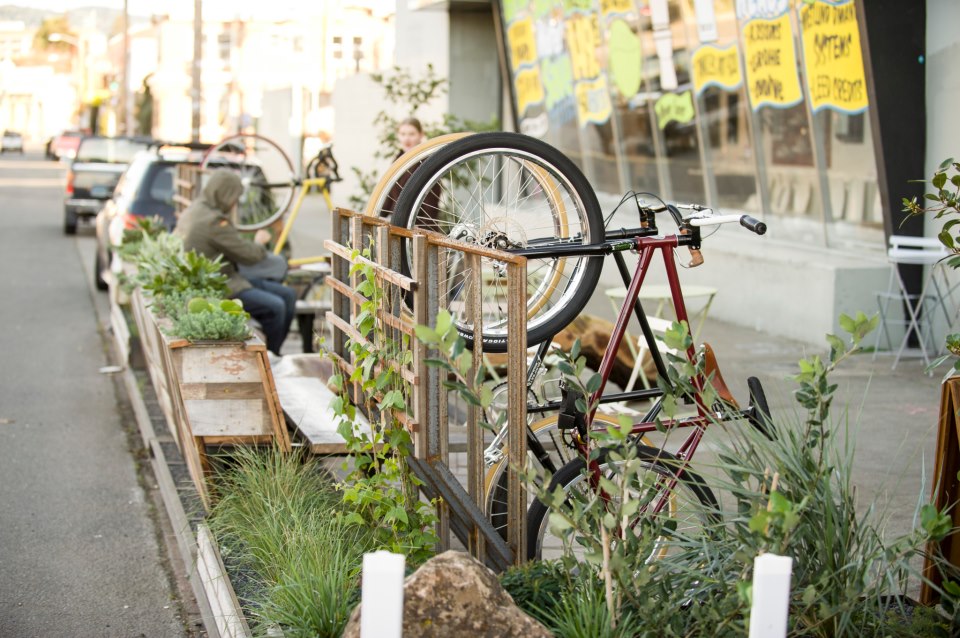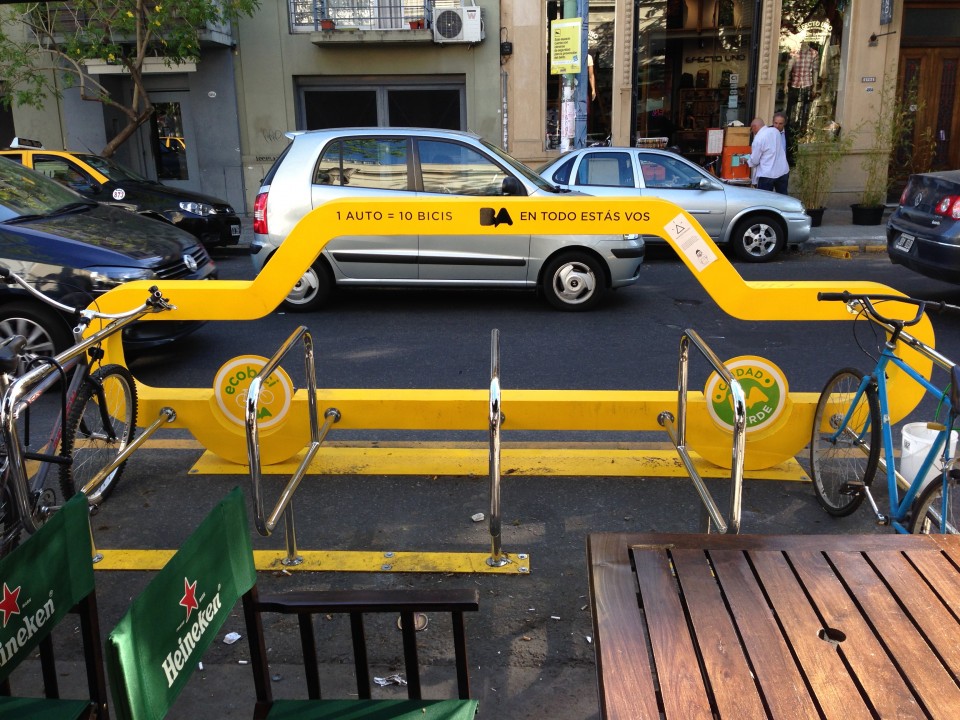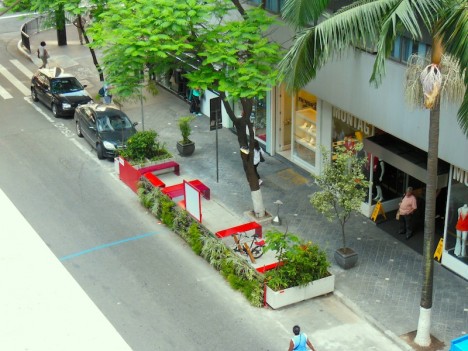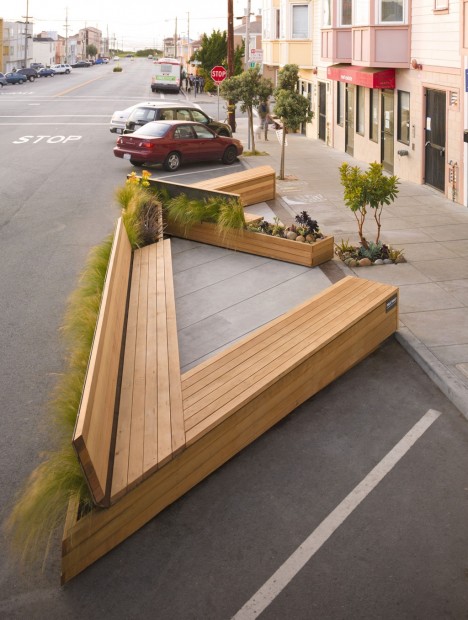In the asphalt-covered space that would normally be occupied by a single vehicle could be a bike rack, a dance floor, an outdoor cafe, a kiddie pool or a beautifully landscaped public park. Sometimes guerrilla and sometimes officially city-sanctioned, these 15 projects occupy urban parking spots for uses that are undoubtedly a lot more fun.
Bike Parking = Superior Efficiency
Ten bicycles can easily fit within a single parking spot, and many cities have started to take advantage of this fact with specially-sized bike racks. Buenos Aires installed a few car-shaped racks in parking spots throughout the city, an idea that caught the attention of Washington DC’s transit authority, and San Francisco’s 40th street parklet (seen top) was created by adjacent business Manifesto & Subrosa. They’re also occasionally unsanctioned, with citizens taking it upon themselves to occupy a spot with bikes for a day.
Car-Shaped Tents for Urban Camping
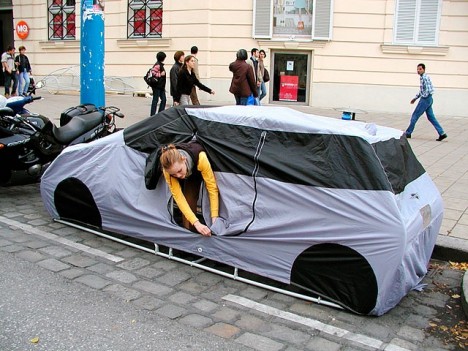
Designer Michael Rakowitz created a car-shaped tent made just for parking spaces, making it possible to camp in urban locations while (kind of) blending in. A similar tent used a car-shaped frame and a standard car cover for an even more convincing effect, offering affordable housing virtually anywhere in the city.
Sao Paulo’s Permanent Parklets
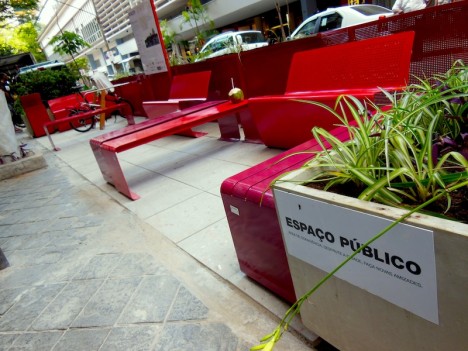
The city of Sao Paulo, Brazil has some of the world’s prettiest and most colorful parklets, which are parking spots transformed into mini public parks. While many parklets are temporary, this one is permanent, with the spot fully paved and heavy-duty urban furniture in a bright shade of red.
Noriega Street Parklet, San Francisco
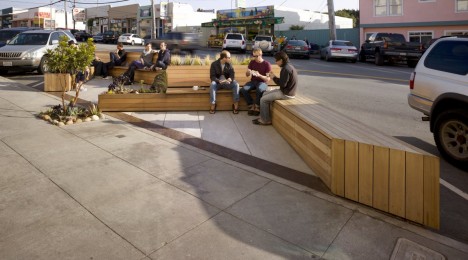
Diagonal wooden benches with built-in greenery take up three parking spots in San Francisco in this design by Matarozzi Pelsinger Design + Build. The seating was designed around the awkward shape of the available space, and the rule that it had to be at least three feet away from adjacent parking spots. Says the firm, “The acute corners are embraced as areas for planting and “chaise lounge” seating, where tight plan geometry becomes an excuse to put your feet up.”
